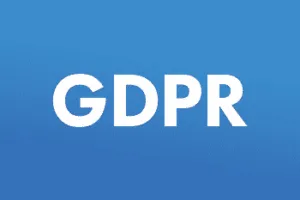App ratings and reviews help identify what’s working and what isn’t, from an app’s user interface design to bugs in the software. Every developer starts out by creating the best possible product they can with the hopes of getting high app ratings and reviews early on in order to attract future business. By gathering feedback from users, your team can use the information shared through ratings and reviews to improve the app, bolster conversion rates and increase ROI.
When Should You Ask Users to Rate Your App?
The first time you ask your user for a rating or review should be after they have had a significant number of interactions with the app. You want them to have enough time to make up their mind about the app.
Remember, the app experience should be as free of interruptions as possible since users could easily get annoyed if they are being constantly bombarded with requests to review the app. After all, the functionality of the app should always be the top priority. Be patient and only ask for a rating every one or two weeks and only if the user has been using the app frequently.
Also, never interrupt the user in the middle of their app experience with pop-ups or push notifications. This is especially true if they are completing a task that is stressful or involves a deadline, like making a purchase. Wait until they are on the app’s home screen and perhaps ask for a rating outside of regular work hours.
In addition, make sure the user has the option to decline to leave a rating by simply tapping their device once. Inversely, if they do want to rate the app, allow them to do so with a simple tap, along with the option of a written review if they choose to do so.
The bottom line is that you want the app’s functionality to be the priority, while ratings and reviews should be optional. Your users should be satisfied with the app experience, which will make it more likely that they’ll review your app favorably once they have formed an opinion.
How Do You Improve Your App’s Ratings and Reviews?
Getting good app ratings and reviews begins with creating an intuitive app with solid features that users truly benefit from. Your app should offer cutting-edge solutions and be updated regularly in order to prevent any bugs.
Still, there are ways to improve your app’s chances of getting good reviews. Here are some strategies you might consider:
- Plugins: There are plugins on Android and iOS devices that make it easy for users to review an app. These plugins limit the number of times your users are prompted to review the app based on how much they use it and how much time has elapsed since the previous rating. You can also develop your own plugin, crafting an algorithm that ensures users get a rating prompt at the right time.
- Incentives: You can add in-app incentives that encourage users to rate your app. Some games, for example, offer rewards if users review the app. Or, you could enter users into a drawing for a gift card or other reward if they review or rate the app. Don’t be afraid to get creative with incentives and be sure it is something fun and valuable to users.
- Chatbots and live chats: Chatbots and live chats create a platform for conversation between your users and your team. Offering customer service in an automated manner or with a real person can reduce the chances of your app getting a negative review.
Ensuring the quality of your app is up to par is the most important way of garnering positive reviews, but adding other tools and incentives can speed up the process and attract more users.
Does Your App’s Rating Affect Your Conversion Rate?
Conventional wisdom suggests that the higher rating your app has on an app store, the more users will choose your application. Instabridge tested this theory by running a campaign with an app over three years and seeing how ratings affected conversion rates. The team constantly updated and improved the app in order to get a higher rating. Here’s what they discovered:
- A rating of 3.9 led to a conversion rate of 36.56%
- A rating of 4.0 led to a conversion rate of 41.62% (+13.84%)
- A rating of 4.1 led to a conversion rate of 44.23% (+6.28%)
- A rating of 4.2 led to a conversion rate of 47.85% (+8.18%)
- A rating of 4.3 led to a conversion rate of 47.70% (-0,32%)
As you can see, even a decimal point higher in the ratings increased the chances of higher app traffic. These figures also show that the largest gain happened between a 3.9 to 4.0 rating, although there could be other factors affecting these figures. Nevertheless, getting at least 4.0 stars out of 5 will highly increase your traffic. As such, your team should be aiming for at least a 4.0 rating for your app or higher if you’d like to be a step ahead of the competition.
If your ratings are below 4.0, read users’ feedback to determine what areas you need to change to improve your app or whether it needs a complete revamp. If you’re already getting a 4.0 or higher, don’t change the look and functionalities of your app too much as you could face backlash, like Snapchat did when parent company Snap changed the look of its entire app.
Earning high app ratings and reviews isn’t easy but you can do so by developing a relevant, cutting-edge app designed to deliver a smooth user experience. Plus, adding features like incentives in exchange for a rating or review will ultimately bolster your app’s popularity and boost your profit margins.
Getting good app ratings and reviews begins with having a well-crafted app, and for that, you will need to trust your project to a skilled developer. The team at 7T specializes in custom mobile app development and is also well-versed in emerging technologies, including augmented reality, virtual reality, blockchain, artificial intelligence and natural language processing.
7T is headquartered in Dallas, but we also work with clients in Austin, Houston, and beyond. If you’re ready to begin development, we invite you to contact us today.











